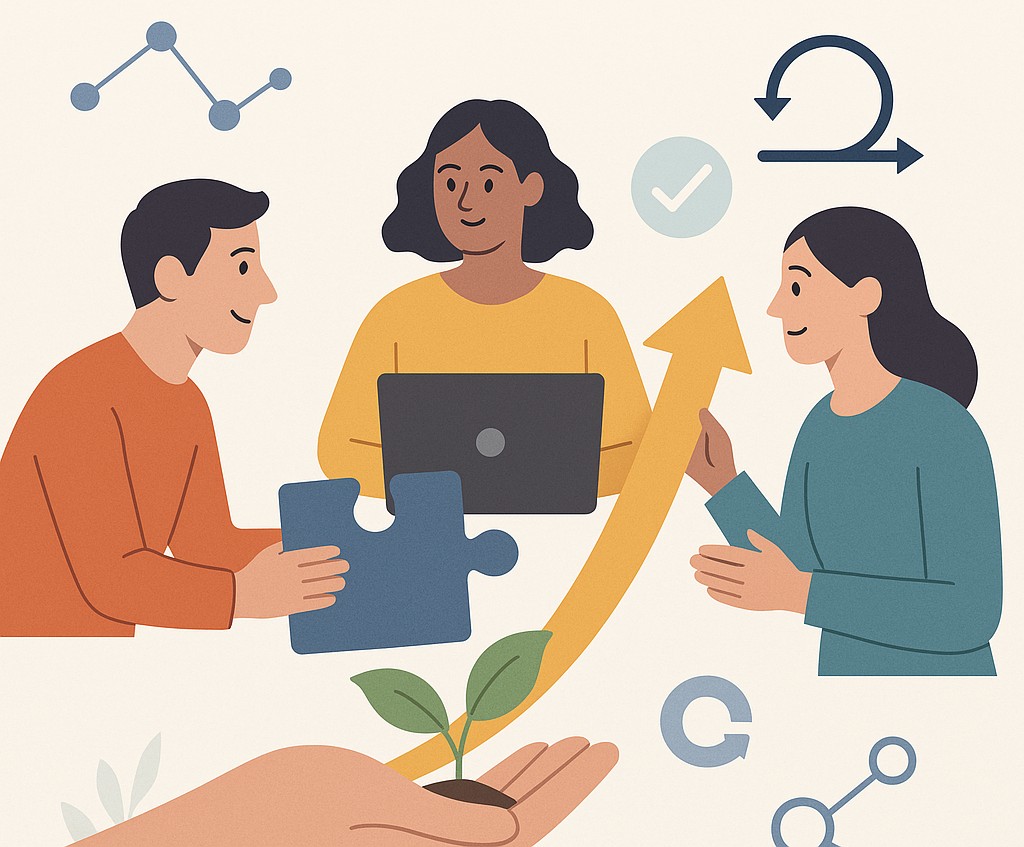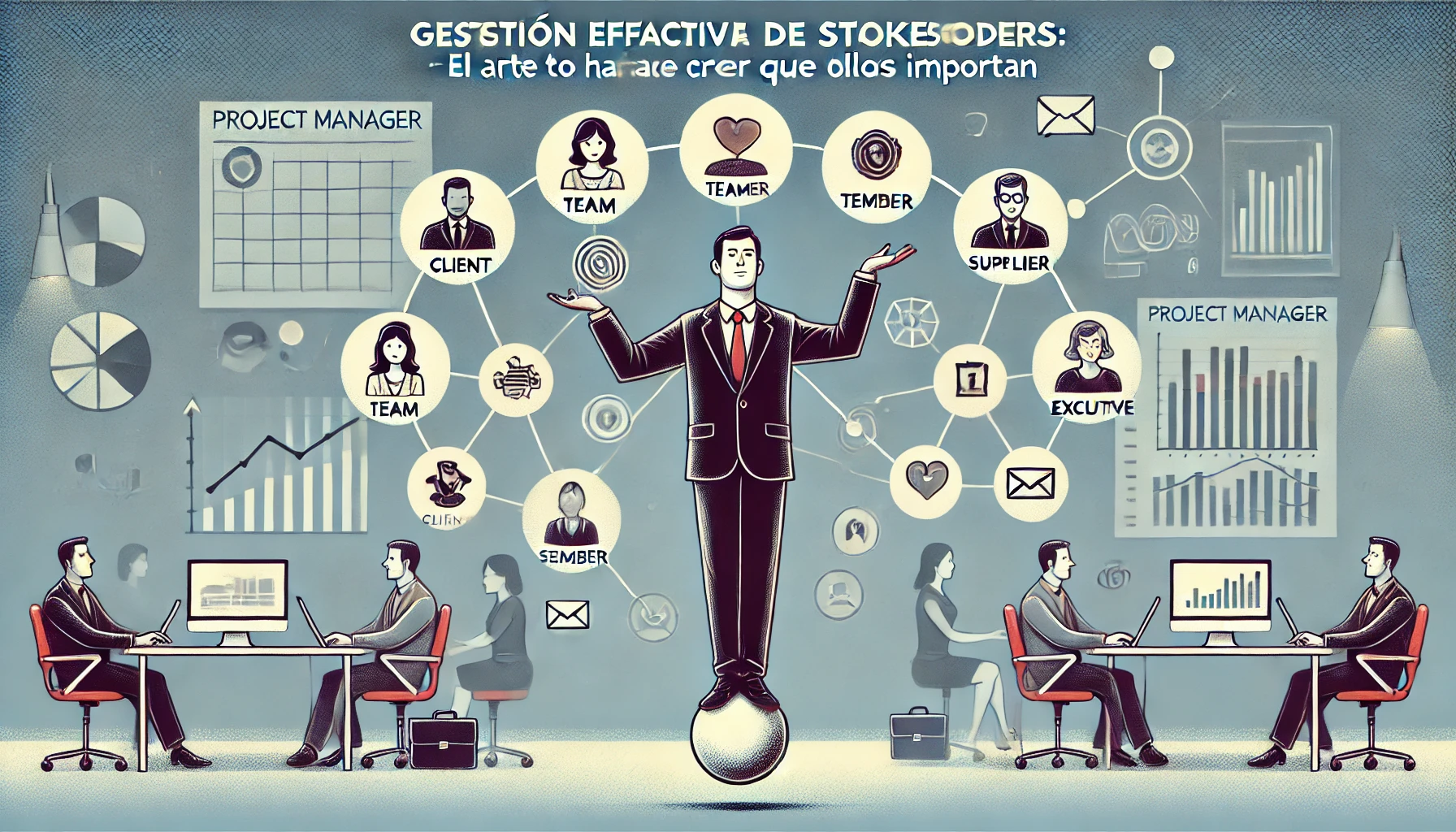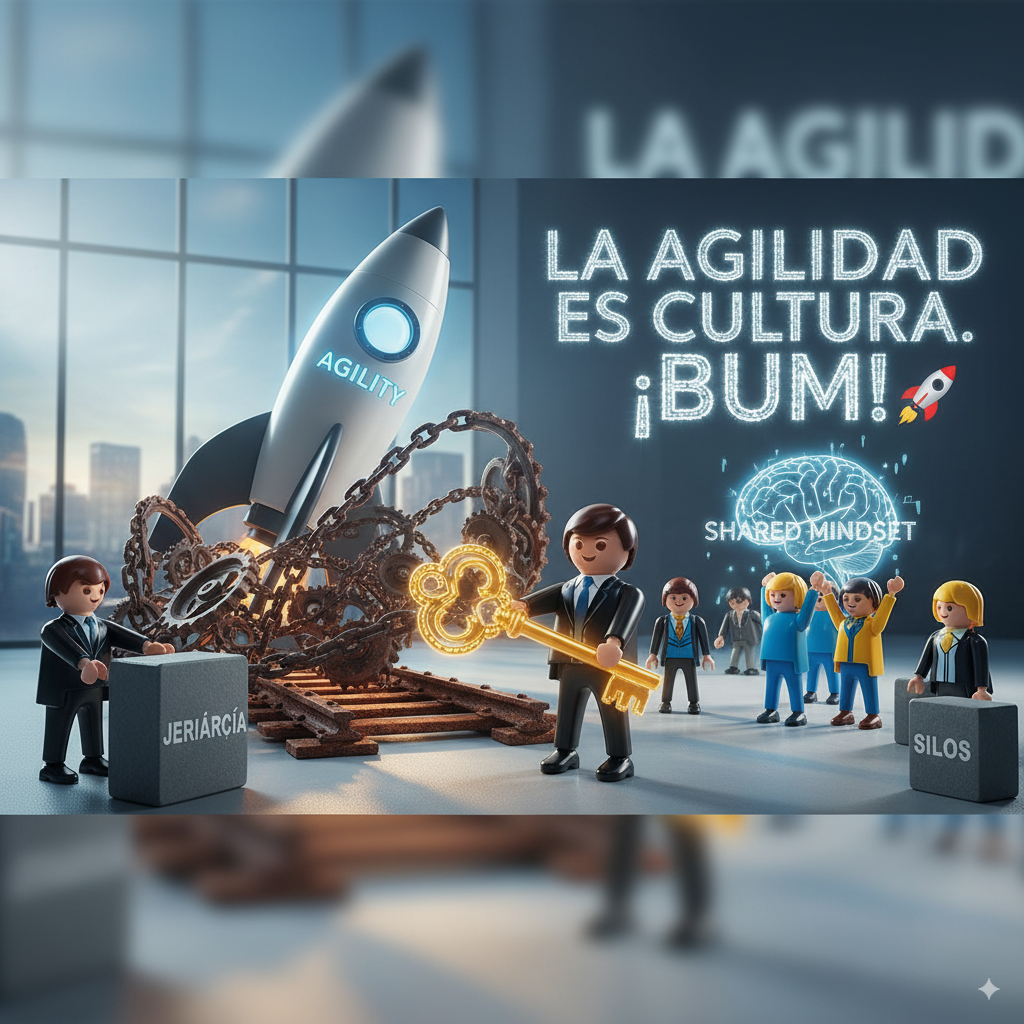
The use of the word Agile has long since become widespread and standardized, crossing technical boundaries and being very present in areas such as business, strategy and leadership.The use of the word Agile has long since become widespread and standardized, crossing the barriers of the technical terrain and being very present in areas such as business, strategy and leadership. This first step is just the spearhead for organizational transformation.
What can you expect in this article? Practical tools I have used as part of Agile consulting processes
As the Agile ManifestoIndividuals and interactions over processes and tools.
Why talk about tools to build an Agile culture?
The Agile culture is not decreed or implemented by a manual. It is cultivated.
And like any crop, it requires:
- Fertile ground: an open organizational context, accessible leadership and safe spaces.
- Seeds: values, principles and behaviors aligned with an agile vision.
- Constant care: rituals, conversations and repeated actions with intention.
These tools are not magic recipes, but they are powerful levers that we frequently use in our organizational consulting processes. organizational consulting. They serve to make beliefs visible, open conversations, generate agreements and cultivate more humane and effective ways of working.
Tool 1: Team culture canvas
One of the first tools I propose is the Team Culture Canvas. It helps to make explicit what is often taken for granted: the behaviors, agreements and values we want to see in our day-to-day work.
How to use:
- Facilitates a participatory session with the entire team.
- Work together on these sections (you can adapt them):
- “That’s what we’re like when we’re at our best.”
- “Behaviors that drive us.”
- “Behaviors we want to leave behind.”
- “What ‘Agile’ means to us.”
- Transform these ideas into team agreements. Make them visible and shared.
- Periodically review the agreements and adjust them to the current reality of the Team.
Impact:
It generates a sense of belonging, aligns expectations and allows reviewing whether the team is evolving in coherence with what it has defined as important.
Reflection:
What behaviors are reinforcing – or sabotaging – the culture you want to build?
Tool 2: Culture Retrospectives
They are retrospectives focused not only on processes, but on how the culture is being lived. Powerful questions help assess real cultural advances and frictions.
Retrospectives don’t always have to revolve around processes and efficiency. Some of the most transformative ones I have facilitated focused on reviewing how we are being as a team.
Powerful questions to open the conversation:
- What behaviors did we have this week that bring us closer to the culture we want?
- What conversations did we avoid? What were the consequences?
- In what moments were we brave?
- What habits do we need to leave behind?
Use powerful, open-ended questions:
- How did you…?
- What…?
- Which one…?
These dynamics generate collective awareness, strengthen psychological safety and open conversations necessary to evolve as a team.
Tip:
Use the Team Culture Canvas agreements to regularly evaluate how you are living them.
Reflection:
How often do you stop to talk about how you are doing, beyond what you are doing?
Tool 3: Cultural Dashboards
Cultural visibility dashboards are tools we use to reinforce behaviors aligned with the Agile culture and provide continuous feedback. Transparency is one of the core values of agile.
This ties directly into our frameworks in Agile consulting. Agile consulting.
Some simple but effective ideas:
- Learning of the week” panel.
- Phrases or commitments visible in the shared space.
- Cultural Thermometers: “This week, how was our collaboration?”
- Stories of achievement told in first person.
Culture is also built through stories. What is told is remembered. And what is remembered is reinforced.
Reflection:
What’s being told – and what isn’t – in your team? What stories are you building?
Tool 4: Open Space for teams
Open Space Technology is not exclusive to large events. It can be a powerful tool within a team to foster self-organization, autonomy and co-creation.
Example of application:
- Once a month, half a day dedicated to topics proposed by the team.
- They are freely grouped according to affinity and interests.
- Learning is documented and concrete actions are defined.
These types of dynamics reinforce the Agile principles of collaboration, adaptability and focus on what really matters.
Tip:
If there are no issues to be addressed, it is also a very good topic to address, and it delves into the reasons for this absence of proposals.
Reflection:
How much room does your team’s voice have in decisions that affect them?
Tool 5: Values and decision codes
When we help define a cultural code, this translates into clear criteria for making decisions consistent with team and business values. This practice is a regular part of our organizational consulting services. organizational consulting.
Example:
- “We value transparency, so we share the context of every decision.”
- “Where there is disagreement, we seek to understand rather than convince.”
- “If a decision impacts others, we always include their perspective.”
This helps to make value-aligned decisions and reduce unnecessary friction.
Tip:
Less is more. The goal is not to have a lot of Values in a document, the goal is to integrate them into the teams and make them part of the culture.
Reflection:
How are decisions made in your team, and is it consistent with the values you claim to defend?
Tool 6: User stories…. cultural
Yes, user stories can also be applied to cultural values. This approach helps to translate abstract values into concrete observable actions.
Example:
As a team committed to continuous improvement,
wants to have a monthly space to share mistakes and learnings,
in order to grow together without fear.
This format forces us to be specific and to translate the abstract into the experiential.
Reflection:
What values could you downgrade to actionable stories in your team today?
Tool 7: Cultural One-on-One
A classic that becomes a lever for transformation when we focus on culture. How often do you generate real spaces for individual listening?
Some questions I use:
- What team value do you think we are experiencing the most lately?
- What is it costing you?
- What behaviors of the team make you proud?
- What would you need to feel more confident or more listened to?
Tip:
Create a safe space to have these conversations, starting by agreeing on commitments on how the One on One will be conducted:
- Will everything we talk about be confidential?
- Is there anything you don’t want to talk about?
- What do you expect from your Leader in this conversation?
In addition, always keep to the established schedule and Timebox, be punctual. These are deep and important sessions for your team.
Reflection:
How often do you create genuine listening spaces with each person on the team?
Practical tips for strengthening an Agile culture
- Don’t underestimate the details. Language, symbols, spaces… everything communicates culture.
- Models from leadership. Consistent leadership is key. If you want to know more, check out our article: How to become an Agile Leader without dying trying to become one.
- Experiment and adapt. There is no single recipe. Each team is a universe.
- More conversations, less metrics. Quality conversations are your best cultural KPI.
- Consistency. What you say and what you do must be aligned. If not, you lose credibility and culture.
Personal anecdote: when culture is built with intent
In one organization I worked with, I worked with several teams, each with a unique identity and its own “catalog” of resistance to change. There was no universal solution. A Kanban board, a well-refined backlog or a homogeneous formula was not enough. Each team needed something different: active listening, genuine adaptation to their reality, understanding of their context and level of maturity. And above all, the creation of a safe space where they could express themselves freely and define together their own cultural manifesto.
From there, each team evolved at its own pace, in its own direction. My role was to facilitate, support and adapt. Over time, without forcing it, the teams began to converge towards similar stages of maturity, showing greater autonomy, cohesion and capacity to deliver. The change was not immediate, but it was transformational.
The most powerful thing about that experience was not the tools. It was the conversations we were able to open and sustain.
Final reflection
A sustainable Agile culture is not born out of PowerPoint, but out of everyday life. In how feedback is given, achievements are celebrated, error is managed and decisions are made. If you want to move towards a truly agile organizational culture, take care of conversations, trust spaces and daily example.
Culture is not imposed. It is built with presence, intention and coherence.
Some time ago Alberto Arroyo talked about Agile Leadership, I leave you his article: How to become an Agile Leader without dying trying.
Do you want to take your team one step further? We can help you from SmartWay through our Agile consulting, OKR consulting and organizational transformation services .
Recommended resource
Simon Sinek – TEDTalk: “How great leaders inspire action”.
A classic that connects to the “why” of all cultural change.



